A Brief History of California’s Grasslands
Grasslands are part of California’s heritage. Approximately 25% of the state is covered by them, and they are even featured on the state flag (look at what the bear is standing on). However, California’s grasslands look very different today than they did 200 years ago. The arrival of Spanish settlers in the mid 1500s to what is now California marked the beginning of a dramatic change in the State’s grassland ecosystems.
Prior to European colonization, Native Americans actively managed grassland habitats to ensure their food sources (seeds, native vegetables, and game animals) had areas to flourish. This management even included burning areas of grassland annually to ensure that forest and scrublands did not overrun the grassy areas. At that time, the grasslands of California were made up primarily of perennial (living more than a single year) bunch grasses such as purple needlegrass (Nassella pulchra) and California oatgrass (Danthonia californica) with forbs (herbaceous flowering plants) filling in the spaces between the grasses.
Join us in a guided hike through the West Knowland Grasslands
Saturday, March 31
Click Here for more information.
When the Europeans arrived, they brought with them domestic livestock and a culture of fire suppression. Over the next two hundred years, increased hunting intensity practically exterminated the native grazing animals such as elk, deer and pronghorn antelope. In the native grazer’s place, massive cattle and sheep ranches sprung up to support the increased demand for meat and hides during the gold rush. The years leading up to California’s booming ranching industry in the mid 1800s provided a plethora of introduction vectors for invasive annual (living only one year) grasses from Europe whose seeds were carried over in hay and in the guts and fur of European cattle and sheep. In some cases, European annual grasses were actually planted in the hopes that they would provide a superior source of forage for livestock. The introduction of these invasive annual grasses to native perennial grassland ecosystems that were already stressed due to overgrazing and fire suppression led to what a leading rangeland manager referred to as “perhaps one of the quickest and most complete type conversions of any plant community known,” the cause and effects of which we are still working to completely understand.
California’s Grasslands Today
Today, less than 1% of California’s original native grassland ecosystems remain (1). The other 99% of grasslands in the state are dominated by non-native annual grass species such as wild oats (Avena fatua) and Harding grass (Phalaris tuberosa) and weeds such as yellow star thistle (Centaurea solstitialis). These non-native annuals form monocultures on the landscape. They sprout earlier in the spring than their native counterparts and therefore out-compete native plant species for light and water. Invasive annual grass stands produce ten times more seeds than native grass stands of the same size, and furthermore, their seeds are five to ten times larger, giving them a big advantage on establishment and fast growth (2). Unlike the native bunch grasses that used to populate our hillsides, the non-native annuals do not grow in evenly spaced clumps and therefore, they do not provide enough open ground for our native wildflowers to thrive and blossom in the springtime. The loss of California’s native grassland has been accompanied by a loss of the splendor of spring wildflower blooms that used to blanket our hills and valleys in arrays of purple, blue, yellow, and orange.
The manner in which native grasses grow, integrates better with other native plants like the wildflowers. That diversity of plants attracts wildlife not found in annual grasses including native mammals and pollinating insects (3). As if these benefits weren’t enough, native grasslands are also more pleasant to walk through. If you have ever ventured out into non-native annual grasslands in the summer dry season, you probably recall the sharp seedpods of the dry annual grasses and thistles sticking to your shoes and poking into your socks.
The Grasslands of Knowland Park
The good news is that a remnant stand of the 1% of remaining native grassland in our state is located right here in Oakland’s backyard. Oakland’s Knowland Park is home to several acres of remarkably well preserved native grassland. Some areas of the grasslands at Knowland Park contain over 70% native species cover (absolute cover), a ratio practically unheard of these days. This is one of the reasons that the East Bay Chapter of the California Native Plant Society included Knowland Park as one of their fifteen Botanical Priority Protection Areas of Alameda and Contra Costa County.
These high quality stands are so rare that the California Department of Fish and Game has concluded that grasslands with 10% or more absolute cover of native grasses represent populations that are rare and “highly imperiled” in California. According to the California Native Grasslands Association, the Knowland Park grasslands contain the largest, high quality expanse of native prairie known to exist in the West-facing hills of the San Francisco Bay. Fourteen native grass species have been found remaining in the western knolls of the park, and of the 44 rare and unusual plants of Knowland Park, a quarter of them are grassland specialists.
The native grasslands of Knowland Park constitute exemplar stands and can be equated to a library of information helping soil scientists, rangeland ecologists, and natural resource managers understand how native ecosystems function. These stands also serve as an example of what a thriving native grassland ecosystem looks like, providing a goal for those working to restore and enhance native grasslands throughout the state to work toward.
Other benefits of Knowland Park’s native grasslands include conservation of regional genetic diversity, providing a living habitat system for the diverse flora and fauna that depend on the unique site, assisting in learning and appreciating the area’s original natural and cultural heritage, and providing a sense of place for those who visit.
Native grass species you are likely to see during a walk through Knowland Park’s grasslands include: Purple Needlegrass (Nassella pulchra), Blue wildrye (Elymus glaucus), California oatgrass (Danthonia californica), and California brome (Bromus carinatus). In the upcoming spring months of April and May you will also find native wildflowers such as California poppy (Eschscholzia californica), Blue-eyed grass (Sisyrinchium bellum), and Dove lupine (Lupinus bicolor) interpersed throughout these wonderful native grass stands.
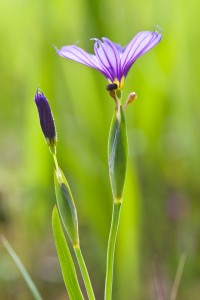
Blue eyed grass at Knowland Park. photo: Ken-ichi UedaLupine flower in the Knowland Park grasslands. photo: Ken-ichi Ueda
Threats to Knowland Park’s Grasslands
Unfortunately for the grasslands of Knowland Park, and for the residents of Oakland and the greater Bay Area, the Oakland Zoo does not understand just how valuable these last remaining native grasslands are. The Zoo has decided to build a 56-acre theme park development on the western knolls of Knowland Park.
The area the Zoo has chosen for this development is exactly the location of the most pristine native grasslands in the park, and it is anticipated that at least 5 acres of native grassland will be destroyed as a result of the Zoo’s plans.
This spring, get out into the grasslands of Knowland Park. Enjoy the native grasses blowing in the warm spring breeze, and marvel at the vivid colors of the wildflower blooms dotting the landscape. We are sure that once you experience the wonders of this precious native habitat that you will join us in demanding that the Zoo find an alternative to expanding up onto the western knolls of the Park. These spaces are too special to bulldoze for gift shops and animal exhibits, especially when the Zoo has space to expand at its current location. The grasslands of Knowland Park belong to the people of California. They remind us of our history, and they provide us with information that will help us protect them far into the future. We will look forward to seeing you out there.
Barry, S., S. Larson, and M. George. 2006. “California native grasslands: a historical perspective”. A guide for developing realistic restoration objectives. Grasslands (winter):7‐11. Web. 28 March 2012. http://californiarangeland.ucdavis.edu/Publications%20pdf/CRCC/California%20Native%20Grasslands%20-%20A%20Historical%20Perspective.pdf
Amme, David. “Grassland Heritage”. April – June 2004 Edition of Bay Nature Magazine. Web. 28 March 2012. http://baynature.org/reprints/GrasslandsHeritage.pdf
Elstein, David. “Restoring California’s Native Grasses”. May 2004 Edition of Agricultural Research Magazine:17. Web. 28 March 2012. http://www.ars.usda.gov/is/AR/archive/may04/grass0504.pdf
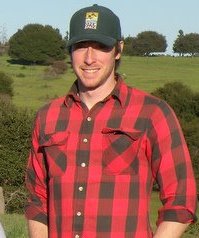 Mack Casterman is the Conservation Analyst for the California Native Plant Society’s East Bay Chapter. He holds a Bachelor of Science degree from UC Davis in Environmental Biology with an emphasis in Natural Resources Management. Mack has been working on natural resources management in the Bay Area since he was 18, first at the San Mateo County Department of Parks and later for the Midpeninsula Regional Open Space District. This work included native grassland management and restoration as well as invasive species control. During his first visit to Knowland Park, Mack was awestruck by the quality of the park’s native grasslands. The diversity and cover of native grasses was unlike anything he had seen in his past work. He hopes that as many people as possible will get a chance to experience Knowland Park’s grasslands and that management and protection of the park will allow these grasslands to flourish in the future.
Mack Casterman is the Conservation Analyst for the California Native Plant Society’s East Bay Chapter. He holds a Bachelor of Science degree from UC Davis in Environmental Biology with an emphasis in Natural Resources Management. Mack has been working on natural resources management in the Bay Area since he was 18, first at the San Mateo County Department of Parks and later for the Midpeninsula Regional Open Space District. This work included native grassland management and restoration as well as invasive species control. During his first visit to Knowland Park, Mack was awestruck by the quality of the park’s native grasslands. The diversity and cover of native grasses was unlike anything he had seen in his past work. He hopes that as many people as possible will get a chance to experience Knowland Park’s grasslands and that management and protection of the park will allow these grasslands to flourish in the future.
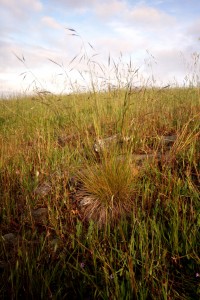
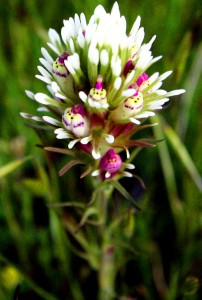
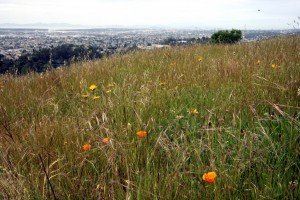
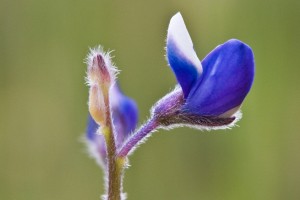
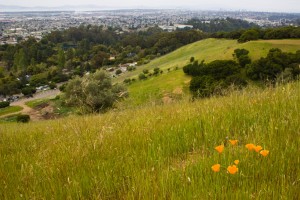
 Follow
Follow


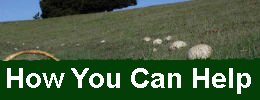




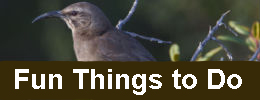
Comments are closed.